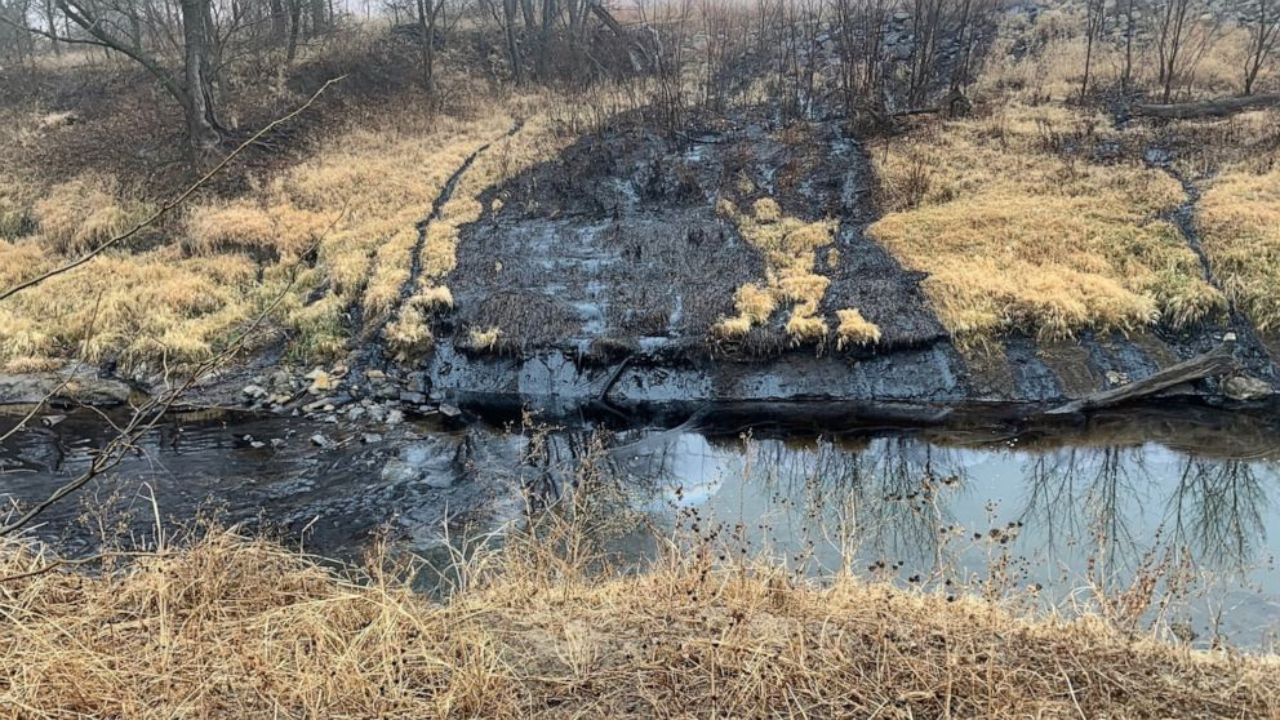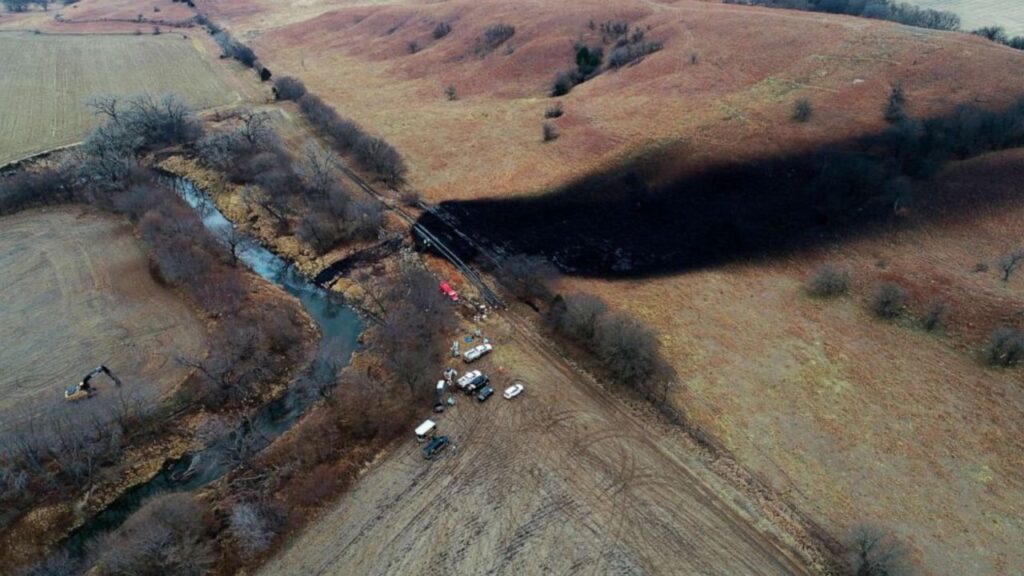Keystone Pipeline oil spill investigators search for cause of Kansas rupture

The bank of Mill Creek in Washington County, Kansas, following a rupture of the Keystone Pipeline on Wednesday, Dec. 7, 2022, in this handout published Dec. 9 by the U.S. Environmental Protection Agency.
(ABC News) – Federal and state environmental officials worked over the weekend to mitigate the fallout from last Wednesday’s Keystone Pipeline rupture that leaked about 14,000 barrels of crude oil into a Kansas creek.
Officials hadn’t yet determined the cause of the incident, TC Energy, the Canadian pipeline operator, said on Sunday.
The spill near Mill Creek, in Washington County, Kansas, had been “contained” by about 250 people working at the site, TC Energy said in a statement.

Some of the thousands of barrels of unrefined oil product ran downhill into the creek, according to the Environmental Protection Agency and the company.
Third-party environmental specialists were among the hundreds of people who responded to clean up the mess, the company said in its Sunday update.
“The product remains contained and multiple vacuum trucks, booms, and additional resources are onsite as we continue the recovery process,” TC Energy said. “Repair planning is also underway, as are shoreline assessments.”
The leak in the 36-inch pipeline was first detected at 9:01 p.m. local time on Wednesday, according to an order issued by the Pipeline and Hazardous Materials Safety Administration, which is part of the U.S. Department of Transportation.
A trip alarm was received six minutes later, the order said. The pipeline was shut down and its isolation valves were closed at 9:08 p.m., according to officials.
As TC Energey staffers approached the site they “identified a crude oil odor,” the order said.
“Continuous air quality monitoring has been deployed and, at this time, there is no indication of adverse health or public concerns,” the company said on Sunday.
TC Energy workers have built an “earthen underflow dam” about 4 miles downstream from the spill, according to the EPA. A pipe is allowing the creek’s water to pass through the dam, “while preventing further migration of oil,” the EPA said in a press release on Friday.
“Oil impacts within Mill Creek are contained upstream of this underflow dam. There are no current concerns for oil migration past the underflow dam,” the EPA said on Friday. “TC Energy has mobilized additional resources, such as vacuum trucks and oil skimmers, to support oil recovery from Mill Creek.”
Rain had been forecast for Monday, the company said, and “crews are beginning preparations” to deal with worsening weather.
“Additional boom is being deployed and the underflow dam is being shored up to withstand precipitation,” the EPA’s on-site coordinator, Tim Curry, wrote in a statement on Sunday.